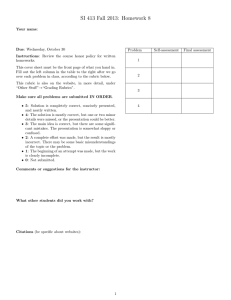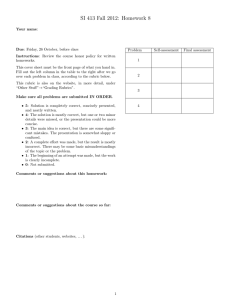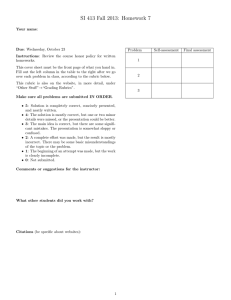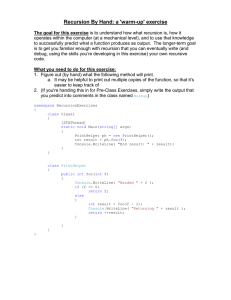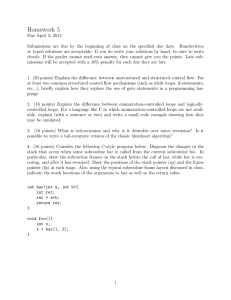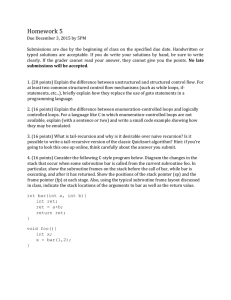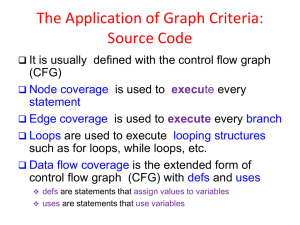SI 413 Fall 2012: Homework 7
advertisement
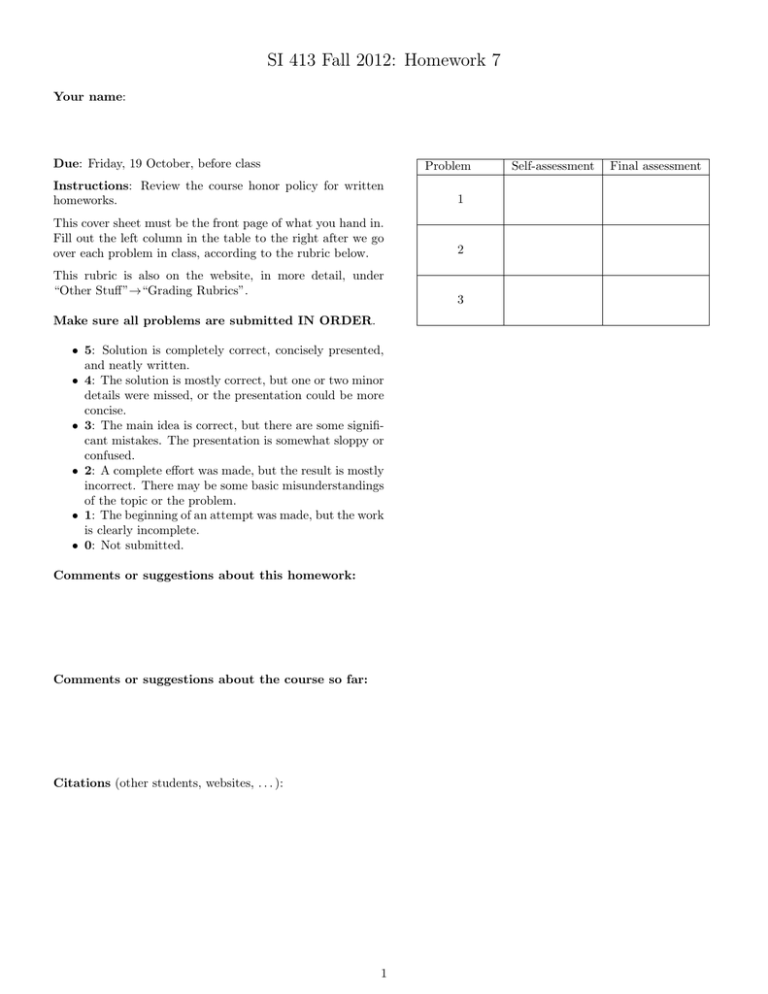
SI 413 Fall 2012: Homework 7
Your name:
Due: Friday, 19 October, before class
Problem
Instructions: Review the course honor policy for written
homeworks.
1
This cover sheet must be the front page of what you hand in.
Fill out the left column in the table to the right after we go
over each problem in class, according to the rubric below.
2
This rubric is also on the website, in more detail, under
“Other Stuff”→“Grading Rubrics”.
Make sure all problems are submitted IN ORDER.
• 5: Solution is completely correct, concisely presented,
and neatly written.
• 4: The solution is mostly correct, but one or two minor
details were missed, or the presentation could be more
concise.
• 3: The main idea is correct, but there are some significant mistakes. The presentation is somewhat sloppy or
confused.
• 2: A complete effort was made, but the result is mostly
incorrect. There may be some basic misunderstandings
of the topic or the problem.
• 1: The beginning of an attempt was made, but the work
is clearly incomplete.
• 0: Not submitted.
Comments or suggestions about this homework:
Comments or suggestions about the course so far:
Citations (other students, websites, . . . ):
1
3
Self-assessment
Final assessment
Use a separate sheet of paper for your answers! Everything should be submitted in one packet, all printed out for
me to see.
0.1
Example Program A
This program is written in pseudocode that’s sort of a cross between Python and Javascript. Hopefully the meaning of
the syntax is straightforward; if not, ask!
1
2
3
4
5
6
7
8
def account ( a ):
def withdraw ( x ):
if a < x :
return False
else :
a = a - x
return True
return withdraw # Notice a function is being returned !
9
10
11
var A = account (10)
var B = account (12)
12
13
14
print A (11)
print B (11)
0.2
Example Program B
This one looks like C++:
1
2
int x = 10;
int i = 5;
3
4
5
6
7
8
9
10
11
12
13
int foo ( x ) {
if ( x == i ) {
return 3;
}
else {
int i = x - 1;
int j = foo ( i );
return 3 * j ;
}
}
14
15
cout << foo (3) << endl ;
2
1
AST
Draw the abstract syntax tree (AST) for Program A above.
2
Dynamic vs Lexical Scope
Give an example of a program in our spl language from labs that will have a different result under dynamic scoping
vs. lexical scoping.
Show the program and indicate what the result will be in each case.
(Your examples do not have to be very complicated, but they should be unique - I want you to come up with your own!)
3
CRT
Trace the execution of Program B above using dynamic scoping implemented with a Central Reference Table (CRT).
In what you turn in, show what the CRT looks like at the time when the stack of bindings for x has exactly 3 values in it.
Be sure to clearly indicate what is printed as the result of the entire program.
3
